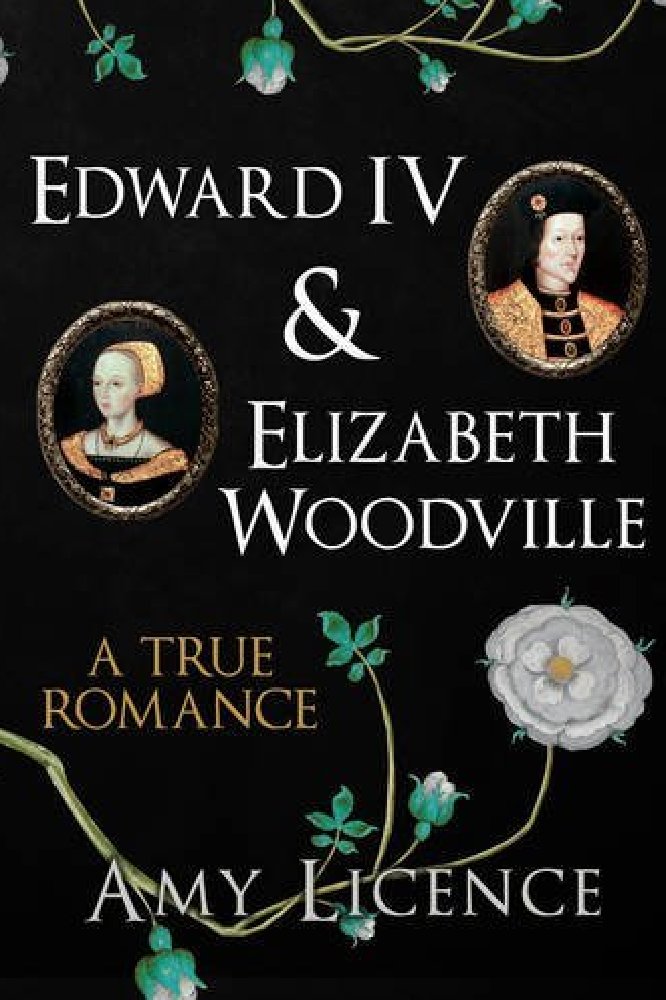1. Elizabeth almost ended up a princess.
Elizabeth's mother, Jacquetta, was first married to John, Duke of Bedford, the uncle of Henry VI. In the 1430s, neither Henry nor his other uncle, Humphrey, had fathered any children. Had Jacquetta borne a daughter by this first match, the baby would have been heir to the English throne. However, Bedford died and Jacquetta married Sir Richard Woodville.

Edward IV & Elizabeth Woodville: A True Romance
2. Edward's father tried to marry Elizabeth off.
In the early 1450s, the Duke of York, and his nephew Warwick "the Kingmaker," both wrote letters to the teenaged Elizabeth, asking her to marry the loyal Yorkist Sir Hugh Jones who admired her "grete wommanhode." Elizabeth politely declined and wed Sir John Grey instead.
3. Elizabeth didn't write a diary.
A spurious "diary" reputing to have been written by Elizabeth appeared in the 1840s from a manuscript that no longer exists. It mentions milking the cows, walking in the fields and going to church, but its style is more Jane Austen than medieval. It was probably adapted from a novel by Elizabeth Benger which appeared in 1827.
4. They married in secret.
The exact details of Edward and Elizabeth's wedding remain a mystery. With just a handful of witnesses, they were wed near her family home of Grafton, traditionally on May 1, 1464. Edward knew his family would disapprove, so he kept it a secret for five months.
5. Edward might have been a bigamist.
After Edward's death, his brother claimed Edward had been previously married, or betrothed, to an Eleanor Butler, nee Talbot, so his match with Elizabeth was invalid. Eleanor had conveniently died in 1469, so there was no one to confirm or deny this.
6. Elizabeth was totally unsuitable as a queen.
Edward finally admitted to his marriage in September 1464 and parliament disapproved. Elizabeth was five years his elder and had been married before, so she was not the virginal bride usually expected for kings. Plus, she had already borne two children and her husband had been killed at St Albans, fighting on the side of the Lancastrians.
7. And yet, Elizabeth was an ideal queen.
Despite her past, and lack of royal blood, Elizabeth actually fitted the medieval ideal of queenship. Contemporary manuscripts praise beauty, submission and fertility in women and Elizabeth did not attempt to enter the masculine arena of politics like her rival Queen Margaret did. Instead, she bore Edward a string of children and influenced him behind the scenes.
8. Their heir arrived in penury.
In 1470, Edward was forced to flee the country following a rebellion by his cousin and brother. Elizabeth was pregnant and retreated into sanctuary at Westminster Abbey, where she gave birth to the future Edward V. For six months, she had no idea whether she would see Edward again.
9. They were happy.
Despite the presence of Edward's mistress, Jane (or Elizabeth) Shore, from around 1475, Edward and Elizabeth remained close and shared a bed regularly. Elizabeth bore her last child by him in 1480, three years before his death.
10. Elizabeth had a pauper's funeral.
Elizabeth outlived Edward by nine years. She saw their eldest daughter become Queen before retiring to live in the quiet surroundings of Bermondsey Abbey. By the terms of her own will, she requested a pious, plain funeral without show, although she was laid to rest beside Edward's splendid tomb at Windsor.

